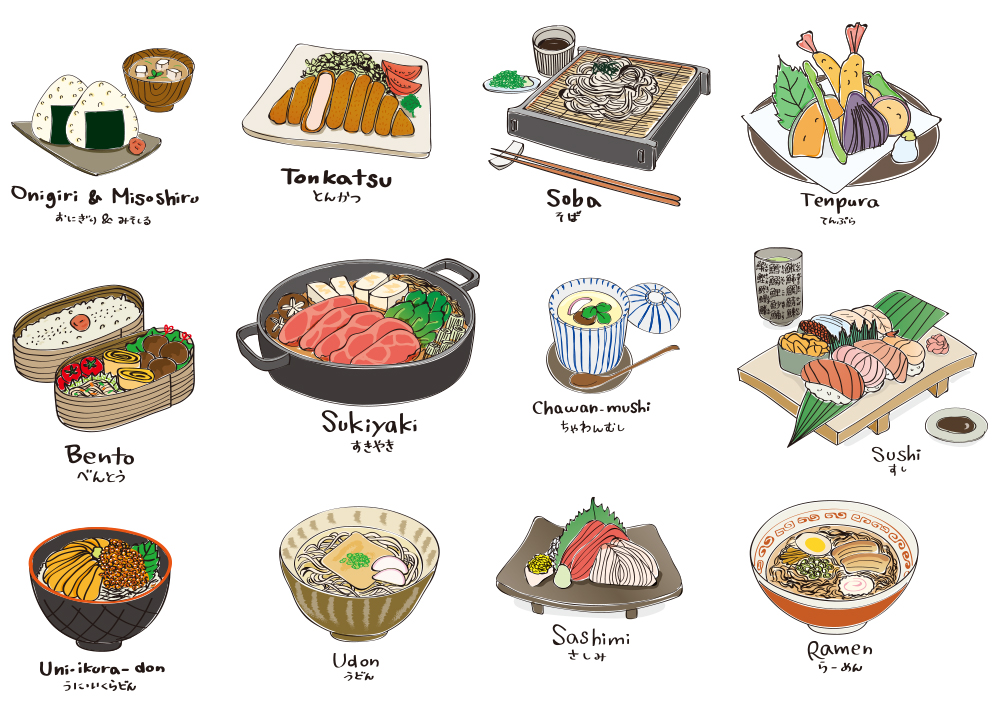If you have a chance to come to Japan, you might be wondering what kind of food is eaten in Japan and concerned if Is it suited to you or not.
Furthermore, you could wonder what is the table manner of eating in Japan and you don’t possibly hope to make the worst first impression on your Japanese business partner when you have a meal with them.
In this article, I will cover the following matters.
-What kind of eating culture Japan has
-Table manners in Japan
After reading it, I hope you will understand the overall Japanese eating culture and etiquette and have a successful trip to Japan and have a good relationship with the Japanese people.

Let me introduce myself a little. I am Hiro from Tokyo and I was born and raised here and well understand overall Japanese culture including eating customs.
What kind of eating culture Japan has

Japan is an island country and it is one of the rich nature (mountains, sea, etc.) country depending on 4 seasonal and respect and take advantages of the nature to food style.
Japanese people hate wasting food and distinctively learnt how to preserve food such as fermenting and adding salt.
At the same time accepting foreign food such as curry, ramen, etc. and made them Japanese style.
Due to the above history of Japanese food culture, Japanese food became one of the world heritages in 2013.
Basics of Japanese food

Japanese food is basically consisted of rice, soup (usually miso soup), small dish (salted veritable, etc.) and main dish (fish, meat, etc.).
The style has been continued since the Heian period (year 784).
Also, there are irregular styles of one big bowl or big dish food such as curry and rice, udon noodle, and sushi, but still those are accepted as Japanese food as well.
Imported and developed food

There are a lot of Japanese food which were originally foreign based and developed in Japan such as curry and rice, spaghetti, ramen, tonkatsu (fried poak).
Those food became totally mutated to be distinctive Japanese food.
For example, in Japan there was no practice of eating curry in the past but it was imported from Britain (not from India) and developed to be sticky curry which contains carrot, onion, prostate and meat more than 100 years ago.
Fermented food

There are a lot of fermented food in Japan such as miso, natto, soy source, tsukemono, etc.
By fermentation, those food can be more nutrient, preserved for a long period and more tasty (suited to Japanese people’s preference).
Around 80% of Japanese people love eating Natto (fermented soy) and my wife loves eating it whereas I always complain about the disgusting smell.
Table manners in Japan

There are also distinctive table manners to follow while eating in Japan and I’d like to introduce some of them for a good first impression to Japanese people.
Greetings before and after eating

We Japanese people have customs of greeting before and after eating.
We always put our hands together and say “Itadakimasu” before eating and this word includes showing gratitude to the food itself, and to the person who made this meal.
Also, after eating we put our hands together again saying “Gochisosamadeshita” meaning thank you for the food telling to the person who made this meal and to the a person who treated this meal. The word also means “running” and in the past people ran a lot to acquire meals and show gratitude to those hardworking people, we say this word.
Hold plates while eating

We Japanese people always hold bowls and plates of rice, soup, etc. when using chopsticks to eat.
In Western society, I know people never hold plates or bowls while eating, so non-Japanese especially Western people could feel strange to see it.
Slurp when eating noodles

When men and women of all ages eat noodles (soba noodles, udon noodles and ramen), they make a slurping sound.
It is completely strange (even Japanese person’s view) because we all Japanese are educated not to open our mouths when chewing, because chewing sounds are impolite in Japan but the slurping sound is not an issue at all.
Finish up all served food
It is thought to be good to finish up all served food. If you have an allergy or feel unwell, you may leave it but in most cases, it is recommended to clean up all plates.
Finishing up food is thought to be showing gratitude for making this food.
The way using chopsticks

There are some rules when using chopsticks to eat.
Please don’t pass food from one person’s chopstics to another person’s chopsticks. This is one of the worst examples of bad manners of using chopsticks. In Japanese funerals, when conveying a dead person’s bones, we use chopsticks to pass bones and receiving it by other chopsticks and this behaviour is associated if you do it while eating.
Furthermore, please don’t stick your chopsticks upright into your rice. This is another example of bad manners because that’s the way a bowl of rice is offered to a dead person.
Conclusion
In this article I introduced overall Japanese eating culture and
I hope you will understand it and etiquette and have a successful trip to Japan and have a good relationship with the Japanese people.



コメント Comment